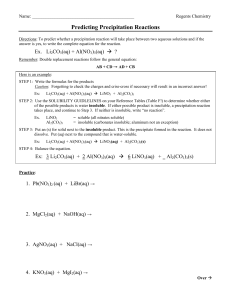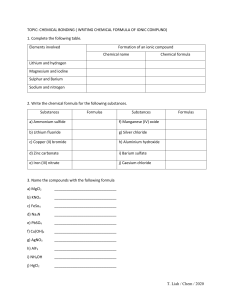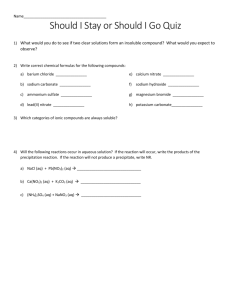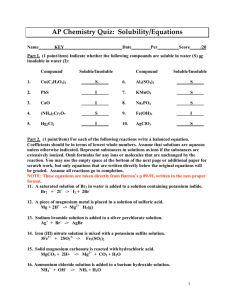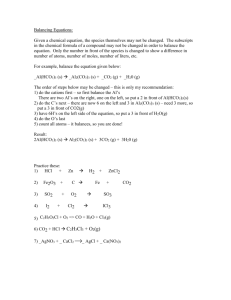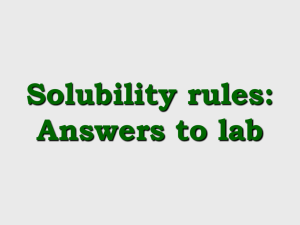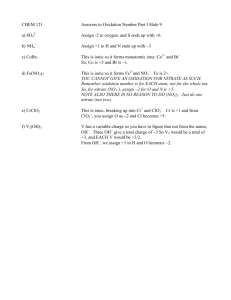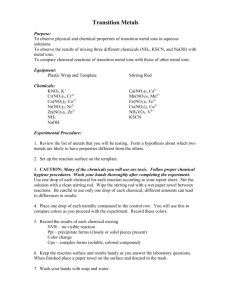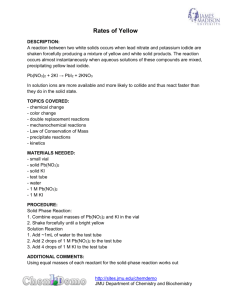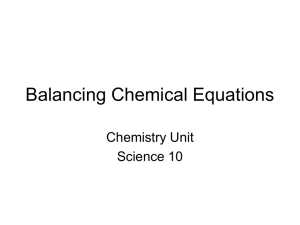Predicting Precipitation Reactions
advertisement
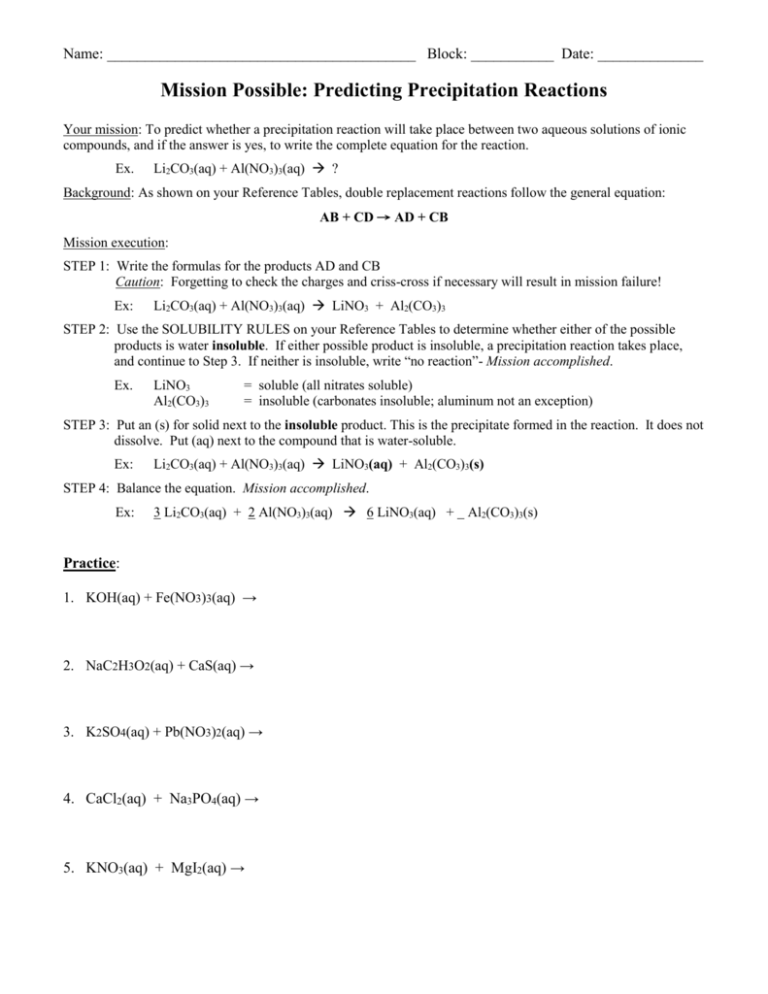
Name: _________________________________________ Block: ___________ Date: ______________ Mission Possible: Predicting Precipitation Reactions Your mission: To predict whether a precipitation reaction will take place between two aqueous solutions of ionic compounds, and if the answer is yes, to write the complete equation for the reaction. Ex. Li2CO3(aq) + Al(NO3)3(aq) ? Background: As shown on your Reference Tables, double replacement reactions follow the general equation: AB + CD → AD + CB Mission execution: STEP 1: Write the formulas for the products AD and CB Caution: Forgetting to check the charges and criss-cross if necessary will result in mission failure! Ex: Li2CO3(aq) + Al(NO3)3(aq) LiNO3 + Al2(CO3)3 STEP 2: Use the SOLUBILITY RULES on your Reference Tables to determine whether either of the possible products is water insoluble. If either possible product is insoluble, a precipitation reaction takes place, and continue to Step 3. If neither is insoluble, write “no reaction”- Mission accomplished. Ex. LiNO3 Al2(CO3)3 = soluble (all nitrates soluble) = insoluble (carbonates insoluble; aluminum not an exception) STEP 3: Put an (s) for solid next to the insoluble product. This is the precipitate formed in the reaction. It does not dissolve. Put (aq) next to the compound that is water-soluble. Ex: Li2CO3(aq) + Al(NO3)3(aq) LiNO3(aq) + Al2(CO3)3(s) STEP 4: Balance the equation. Mission accomplished. Ex: 3 Li2CO3(aq) + 2 Al(NO3)3(aq) 6 LiNO3(aq) + Al2(CO3)3(s) Practice: 1. KOH(aq) + Fe(NO3)3(aq) → 2. NaC2H3O2(aq) + CaS(aq) → 3. K2SO4(aq) + Pb(NO3)2(aq) → 4. CaCl2(aq) + Na3PO4(aq) → 5. KNO3(aq) + MgI2(aq) → 6. Solutions of iron (II) sulfate and barium hydroxide are mixed. 7. Solutions of calcium nitrate and sodium chloride are mixed. 8. Solutions of potassium chloride and silver nitrate are mixed. 9. Solutions of ammonium sulfate and barium chloride are mixed. 10. Pb(NO3)2(aq) + LiI(aq) → Review: In each box, write the symbol (in isotopic notation) for the atom containing the given number of protons and neutrons. Assume neutrality. (Hint: AZX where X = symbol, A = mass #, Z = atomic #) Protons 2 4 Neutrons 6 8 10 3 4 5 6 7 8
